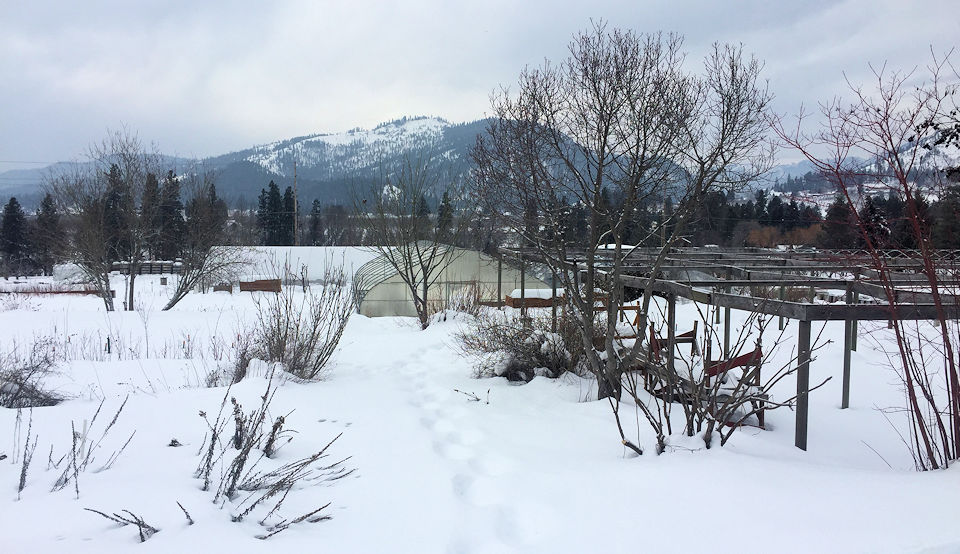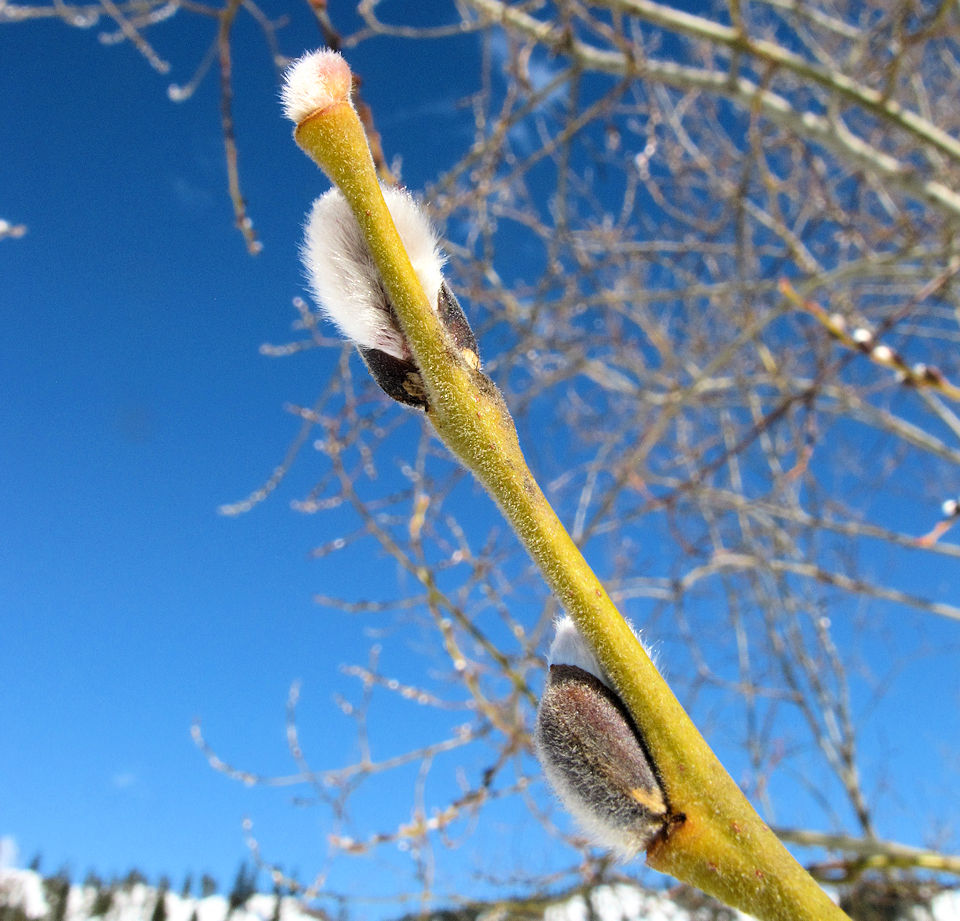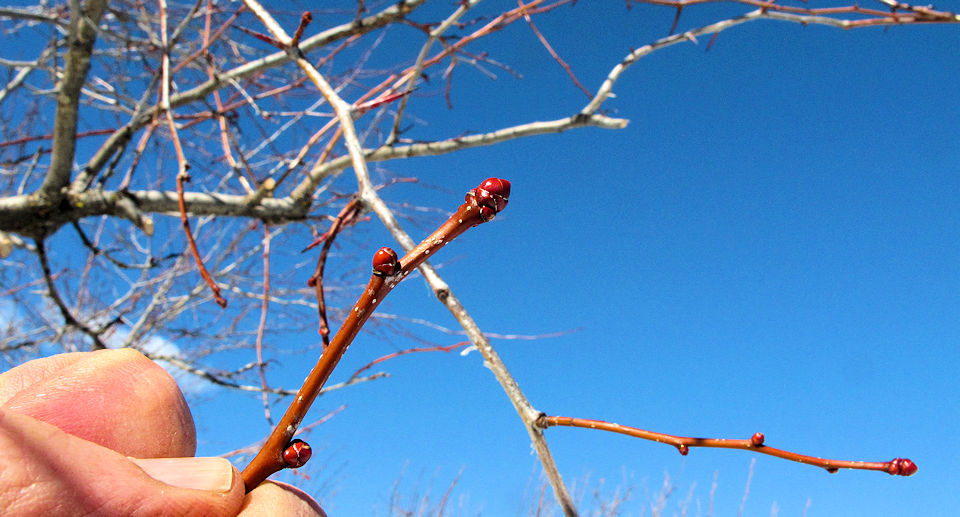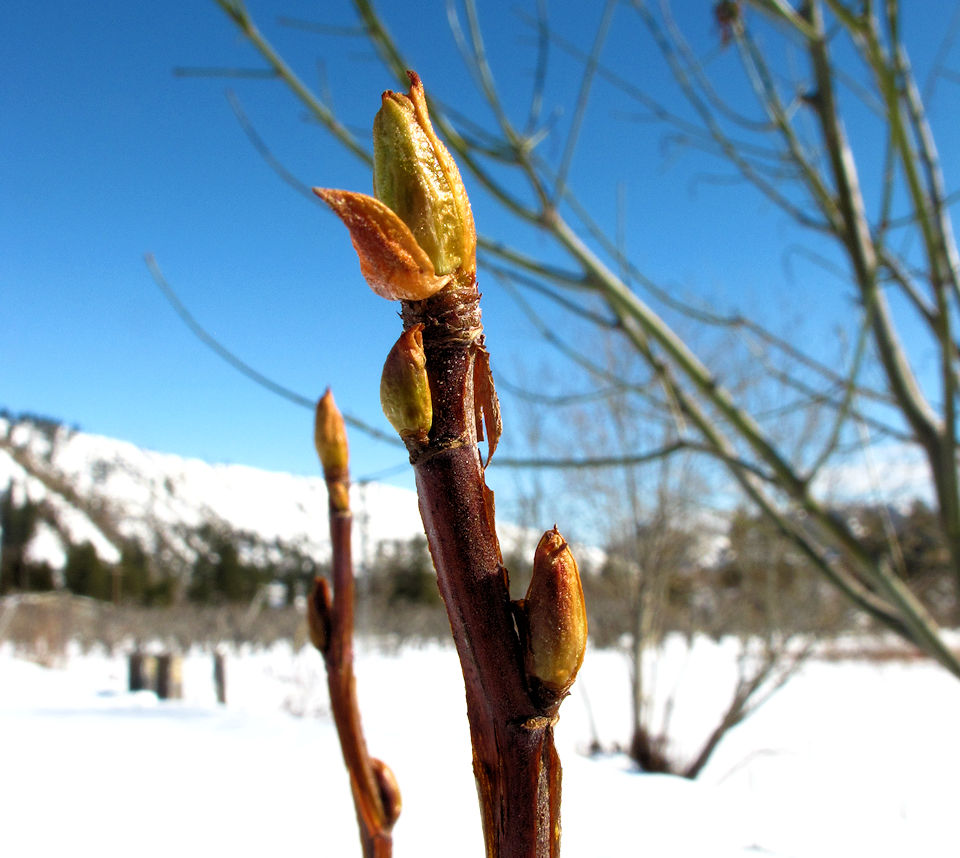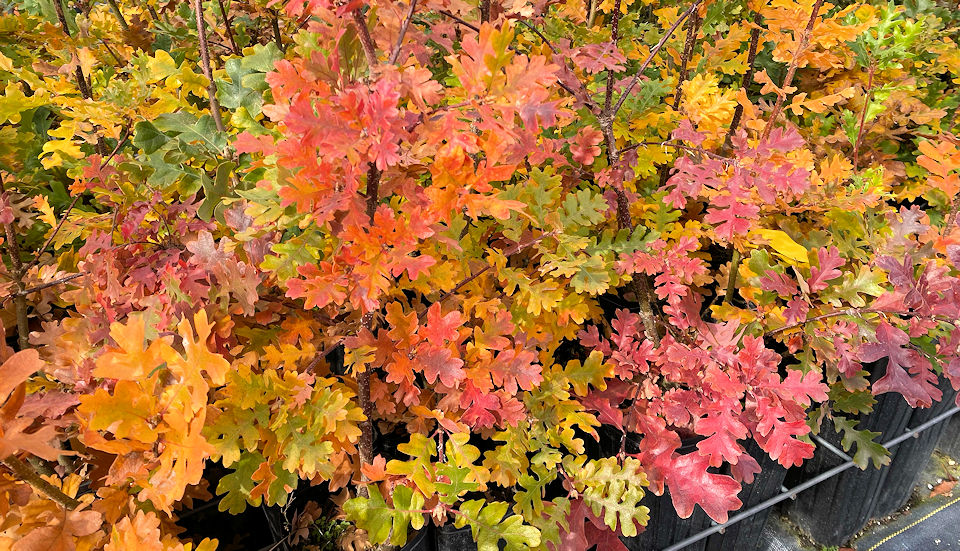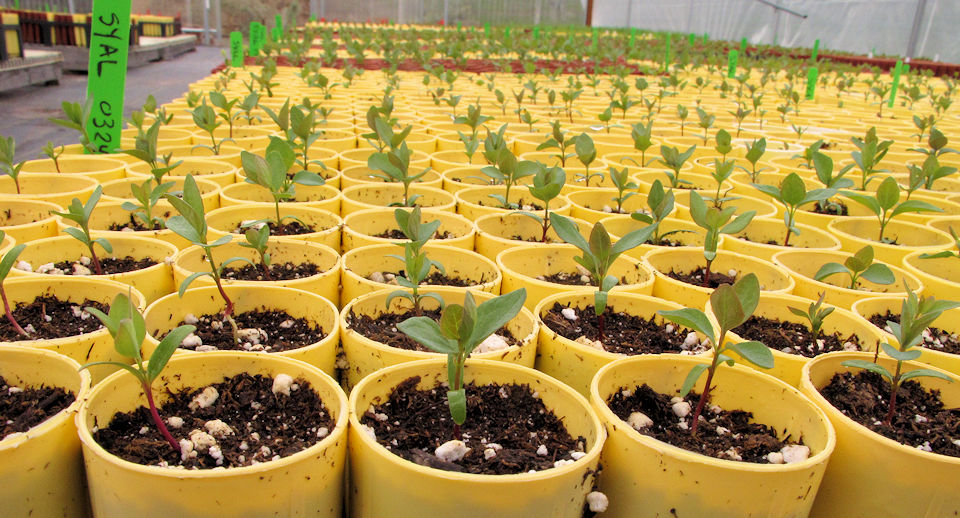Signs of Spring
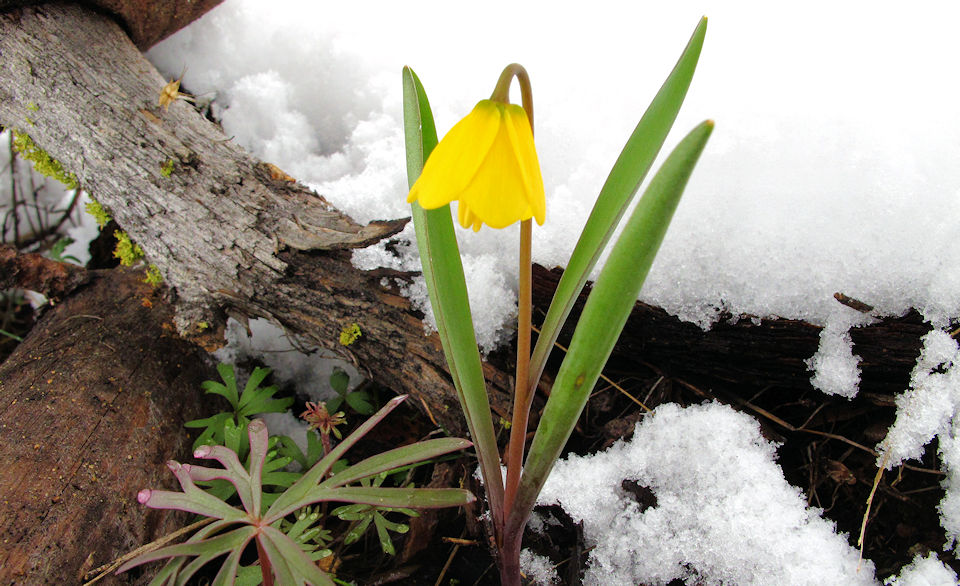
Where is spring? A bleak March 12th in the nursery
Winter has been hanging on late this year in the Wenatchee Valley, leading to the latest start we’ve ever had. Those overwintered plants are fine under their snow blanket (unless the voles are eating them!) but we are anxious to get the season underway. So…
The next day the sun is out and we are attaching the poly covers to the hoophouses; there are 90,000 seeded tubes in there still covered by a foot of snow
We are getting active, and giving those snow shoveling muscles a good workout!
Looking closely around the nursery, we can see that the shrubs and trees are also getting active. Buds are swelling and the first leaves are starting to appear.
Opening buds , “pussy willows”, of a male tree of Scouler’s willow (Salix scouleriana)
Woody plants native to our area have a chilling requirement, i.e. they must receive a certain amount of hours over the winter below freezing before they will break dormancy (technically, endo-dormancy). This protects them from beginning growth too early and risking freezing damage. For most native plants the chilling requirement is satisfied by late January to early February. After that point, the beginning of growth is determined by the accumulation of hours above a specific temperature, for most plants close to 40-42F (referred to as breaking eco-dormancy).
Swelling buds of Douglas hawthorn (Crataegus douglasii)
The first plants to shown signs of growth are often those that bloom earliest, including Scouler’s willow (Salix scouleriana) and red-flowering currant (Ribes sanguineum).
Expanding buds of red-flowering currant (Ribes sanguineum)
Our red-flowering currant bushes have bloomed as early as March 20th (2016) but this year I’d be surprised to see any their lovely flowers within the next three weeks. Most years the first male rufous hummingbirds arrive with those early currant blooms; I hope they’ve figured out that there will be a later start in 2019.
Yellow bells (Fritillaria pudica) shrugging off the snow!
